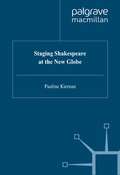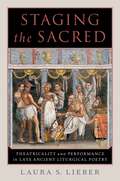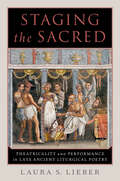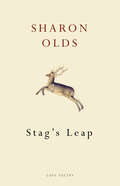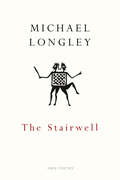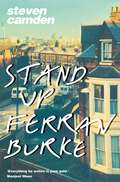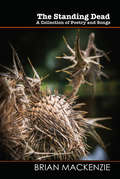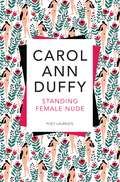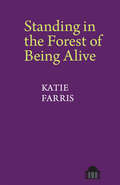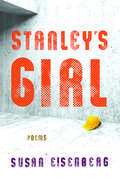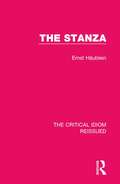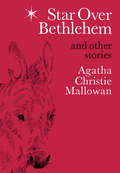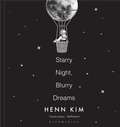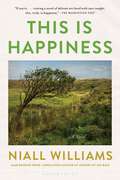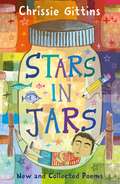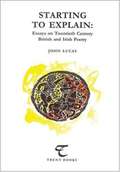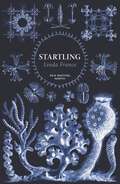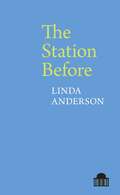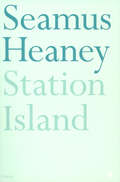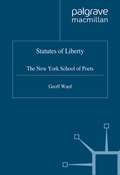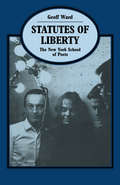- Table View
- List View
Staging Shakespeare at the New Globe (Early Modern Literature in History)
by P. KiernanWhat have we learned from the first experiments performed at the reconstructed Globe on Bankside? What light have recent productions shed on the way Shakespeare intended his plays to be seen? Written by the Leverhulme Fellow appointed to study and record actor use of this new-old playhouse, here is the first analytical account of the discoveries that have been made in its important first years, in workshops, rehearsals and performances. It shows how actors, directors and playgoers have responded to the demands of 'historical' constraints (and unexpected freedoms) to provide valuable new insights into the dynamics of Elizabethan theatre.
Staging the Sacred: Performance in Late Ancient Liturgical Poetry
by Laura S. LieberStaging the Sacred examines the importance of Christian, Jewish, and Samaritan liturgical poetry from Late Antiquity through the lenses of performance, entertainment, and spectacle. Laura Lieber proposes an account of hymnody as a performative and theatrical genre, combining religious and theatrical studies to examine how performers creatively engaged their audiences, utilized different modes of performance, and created complex characters through their speeches. To truly consider performance and engage with these poems fully, Lieber urges readers to imagine the world beyond the page. While poetry and hymnody from Late Antiquity are usually presented in textual form, Lieber moves away from studying the text on its own, engaging instead with how these poems would have been performed and acted. The specific literary techniques associated with oratory and acting in Late Antiquity, such as apostrophe and vivid imagery, help craft a more accurate idea of liturgical presentations. Lieber suggests ways that these ancient poets could have used their physical spaces of performance by borrowing from the gestures and body language of oratory, mime, and pantomime. A highly interdisciplinary study that will appeal to scholars across religion, theatre, literature, and beyond, Staging the Sacred proposes a novel interpretation of Late Antique hymnody and poetry as a performative genre, akin to oratory, theatre, and other modes of public performance, placing these works in their wider societal context.
Staging the Sacred: Performance in Late Ancient Liturgical Poetry
by Laura S. LieberStaging the Sacred examines the importance of Christian, Jewish, and Samaritan liturgical poetry from Late Antiquity through the lenses of performance, entertainment, and spectacle. Laura Lieber proposes an account of hymnody as a performative and theatrical genre, combining religious and theatrical studies to examine how performers creatively engaged their audiences, utilized different modes of performance, and created complex characters through their speeches. To truly consider performance and engage with these poems fully, Lieber urges readers to imagine the world beyond the page. While poetry and hymnody from Late Antiquity are usually presented in textual form, Lieber moves away from studying the text on its own, engaging instead with how these poems would have been performed and acted. The specific literary techniques associated with oratory and acting in Late Antiquity, such as apostrophe and vivid imagery, help craft a more accurate idea of liturgical presentations. Lieber suggests ways that these ancient poets could have used their physical spaces of performance by borrowing from the gestures and body language of oratory, mime, and pantomime. A highly interdisciplinary study that will appeal to scholars across religion, theatre, literature, and beyond, Staging the Sacred proposes a novel interpretation of Late Antique hymnody and poetry as a performative genre, akin to oratory, theatre, and other modes of public performance, placing these works in their wider societal context.
Stag's Leap: Poems
by Sharon OldsWinner of the Pulitzer Prize for Poetry and the T.S. Eliot Poetry PrizeStag's Leap, Sharon Olds' stunningly poignant new sequence of poems, tells the story of a divorce, embracing strands of love, sex, sorrow, memory, and new freedom. In this wise and intimate telling - which carries us through the seasons when her marriage was ending - Sharon Olds opens her heart to the reader, sharing the feeling of invisibility that comes when we are no longer standing in love's sight; the surprising physical passion that still exists between a couple during parting; the loss of everything from her husband's smile to the set of his hip. Olds is naked before us, curious and brave and even generous toward the man who was her mate for thirty years and now loves another woman. As she writes in the remarkable title poem, 'When anyone escapes, my heart / leaps up. Even when it's I who am escaped from, / I am half on the side of the leaver'.Olds' propulsive poetic line and the magic of her imagery are as lively as ever, and there is a new range to the music - sometimes headlong, sometimes contemplative and deep. Her unsparing approach to both pain and love makes this one of the finest, most powerful books of poetry Olds has yet given us.
The Stairwell
by Michael LongleyWinner of the 2015 Griffin Poetry PrizeShortlisted for the 2014 T.S. Eliot PrizeIn The Stairwell, his tenth collection, Michael Longley’s themes and forms reach a new intensity. The second part of the book is a powerful sequence of elegies for his twin brother, Peter, and the dominant mood elsewhere is elegiac. The title poem begins: ‘I have been thinking about the music for my funeral …’ The two parts are also linked by Homer. Longley is well-known for his Homeric versions, and the Iliad is a presiding presence – both in poems about the Great War and in the range of imagery that gives his twin’s death a mythic dimension. Yet funeral music can be life-affirming. Longley has built this collection on intricate doublings, not only when he explores the tensions of twinship. The psychologically suggestive word ‘stairwell’ is itself an ambiguous compound. These poems encompass birth as well as death, childhood and age, nature and art, the animal and human worlds, tenderness and violence, battlefield and ‘homeland’. The Stairwell is a richly textured, immensely moving work. Michael Longley has the rare ability to fuse emotional depth with complicated artistry: to make them, somehow, the same thing.
Stand Up Ferran Burke
by Steven CamdenSteven Camden is a talented and exceptional wordsmith. Everything he writes is pure gold. — Manjeet MannStand Up Ferren Burke is a funny, warm novel in verse from the CLiPPA award winning poet Steven Camden.Comic collectorVinyl connoiseurAir Jordan enthusiastIn his mind, Ferran Burke is many thingsBut to everyone else he is just one,Emile Burke’s little brotherand Emile is all about himself.Now Ferran is stepping into the new worldof high school aloneand needs to learn quickly how to survive.New allies. New enemies. New feelings. New passions.A time capsule coming-of-age story spanning five years of one boy’s lifeas he navigates the chaos trying to find himself.Friends. Fights. Family. Food.Playing with form and visuals throughoutStand Up Ferran Burke is a verse novelas unique as the boy at its heart.
The Standing Dead: A Collection of Poetry and Songs (Wordcatcher Modern Poetry)
by Brian MackenzieIn Brian Mackenzie's second volume of poems and songs the topics of happiness, pain, breakup, lies, lust and laughter are explored. The ups and downs of relationships including the darkness of depression that is rarely spoken of. But the collection isn’t all doom and gloom: with the lows come the highs and humour to keep us going! The Standing Dead holds poems and songs about the vast spectrum of love that we can all relate to. Some of Brian's songs have been adapted, recorded and released by the fabulous Desert Life and are available through all the normal channels.
Standing Female Nude
by Carol Ann DuffyCarol Ann Duffy's outstanding first collection, Standing Female Nude, introduced readers to all they would come to love about her poetry. From lovers to wives to war photographers, the poems it contains range from the delicately poignant to the fiercely political, exploring memory, gender, childhood and place. Within it are also some of her best-known poems, including 'Education for Leisure', as well as, of course, the poem from which the collection takes its title. First published in 1985 to widespread critical acclaim, Standing Female Nude is a work of startling originality and the starting point of the Poet Laureate's dazzling poetic career.
Standing in the Forest of Being Alive: A Memoir in Poems (Pavilion Poetry)
by Katie FarrisStanding in the Forest of Being Alive is a memoir-in-poems that reckons with erotic love even as the narrator is diagnosed and treated for breast cancer at the age of thirty-six during a time of pandemic and political upheaval. With humour and honesty, the book portrays both the pleasures and the horrors of the lover, the citizen, and the medical subject. How can we find, in the midst of hell, what isn't hell? And whom can we tell how much we want to live? An intimate, hilarious and devastating look into some of the most private moments of a life--even if they happen to occur in a medical office with six strangers looking on. This book is for anyone who's ever asked how to live in the face of suffering, and doesn't expect an easy answer. Standing in the Forest of Being Alive looks unflinchingly at painful realities, posing the question ‘What isn't hell?’ and finds the answer in a powerful eros, letting a loved one pull laughter out of the narrator's reluctant mouth like a red violet cerulean handkerchief.
Standing in the Forest of Being Alive: A Memoir in Poems (Pavilion Poetry)
by Katie FarrisShortlisted for the T.S. Eliot Prize 2023. Standing in the Forest of Being Alive is a memoir-in-poems that reckons with erotic love even as the narrator is diagnosed and treated for breast cancer at the age of thirty-six during a time of pandemic and political upheaval. With humour and honesty, the book portrays both the pleasures and the horrors of the lover, the citizen, and the medical subject. How can we find, in the midst of hell, what isn't hell? And whom can we tell how much we want to live? An intimate, hilarious and devastating look into some of the most private moments of a life--even if they happen to occur in a medical office with six strangers looking on. This book is for anyone who's ever asked how to live in the face of suffering, and doesn't expect an easy answer. Standing in the Forest of Being Alive looks unflinchingly at painful realities, posing the question ‘What isn't hell?’ and finds the answer in a powerful eros, letting a loved one pull laughter out of the narrator's reluctant mouth like a red violet cerulean handkerchief.
Stanley’s Girl: Poems
by Susan EisenbergThe fiercely lyrical poetry of Stanley’s Girl is rooted in Susan Eisenberg’s experience as one of the first women to enter the construction industry and from her decades gathering accounts of others to give scaffolding to that history. Eisenberg charts her own induction into the construction workplace culture and how tradeswomen from across the country grappled with what was required to become a team player and succeed in a dangerous workplace where women were unwelcome. The specifics of construction become metaphor as she explores resonances in other spheres—from family to other social and political issues—where violence, or its threat, maintains order. Prying open memory, her poems investigate how systems of discrimination, domination, and exclusion are maintained and how individuals and institutions accommodate to injustice and its agreed-on lies, including her own collusion. Poems in this collection probe workplace-linked suicide, sexual assault, and sometimes-fatal intentional accidents, as well as the role of bystander silence and the responsibility of witness.
The Stanza (The Critical Idiom Reissued #35)
by Ernst HäubleinFirst published in 1978, this work bridges the gap between the study of poetic form, which tends to isolate form from meaning and structural poetics, which tends to focus on meaning without considering the stanza’s impact. Beginning with an examination of the various definitions of the stanza, the book goes on to describe the many forms of the stanza and the different strategies by which poets achieve stanzaic units of meaning. It then evaluates the logical relationships between stanzas, and, finally, assesses their place and function as parts within the poetic whole. This work will be of interest to those studying poetry and literature.
The Stanza (The Critical Idiom Reissued #35)
by Ernst HäubleinFirst published in 1978, this work bridges the gap between the study of poetic form, which tends to isolate form from meaning and structural poetics, which tends to focus on meaning without considering the stanza’s impact. Beginning with an examination of the various definitions of the stanza, the book goes on to describe the many forms of the stanza and the different strategies by which poets achieve stanzaic units of meaning. It then evaluates the logical relationships between stanzas, and, finally, assesses their place and function as parts within the poetic whole. This work will be of interest to those studying poetry and literature.
Star Over Bethlehem: Christmas Stories And Poems
by Agatha ChristieA reproduction in one unique volume of three of Agatha Christie’s rarest and most sought-after books – Star Over Bethlehem, The Road of Dreams and Poems.
Starry Night, Blurry Dreams
by Henn Kimwho are youwhen you're alone Starry Night, Blurry Dreams is a collection of graphic poetry about loneliness, love and existing in our world.a heavy heart is hard to carryhold onWhen words aren't enough to describe our emotions, this book will offer comfort, joy and a friend in the dark. we all have our own beautiful universe
Starry Night, Blurry Dreams: Visual poetry from the iconic Sally Rooney illustrator
by Henn Kimwelcome to the beautiful universe of Henn Kim who are youwhen you're alone Starry Night, Blurry Dreams is a collection of visual poetry about loneliness, love and existing in our world.a heavy heart is hard to carryhold onWhen words aren't enough to describe our emotions, this book will offer comfort, joy and a friend in the dark. we all have our own beautiful universe 'An intoxicating mix of familiarity and surreality' - Creative Review
Stars in Jars: New and Collected Poems by Chrissie Gittins
by Chrissie GittinsA wonderful collection of new poems and old favourites, some funny and some serious, by a talented children's poet. Covering almost two decades of Chrissie Gittins's best work, this collection will appeal to anyone who loves words and what they can do. With charming line illustrations by Calef Brown, this is a delightful selection to get children thinking, reading and rhyming.
Stars in Jars: New and Collected Poems by Chrissie Gittins
by Chrissie GittinsA wonderful collection of new poems and old favourites, some funny and some serious, by a talented children's poet. Covering almost two decades of Chrissie Gittins's best work, this collection will appeal to anyone who loves words and what they can do. With charming line illustrations by Calef Brown, this is a delightful selection to get children thinking, reading and rhyming.
Starting To Explain: Essays On Twentieth Century British And Irish Poetry
by John LucasSpanning the past 20 years, this collection encompasses the work of a leading modern poetry critic.
Startling
by Linda FranceLinda France's tenth collection is galvanising, comprising poems written from, and into, the fabric of the sixth mass extinction. Here, beginnings end and endings begin, as we leap across time and space and encounter the inter-connected nature of emergency. France harnesses the power of innate ecological awareness, refreshing both individual and collective imaginations in order to create a lasting synergy between nature and culture. Grounded in seasonal fieldwork and close observation, these poems call for a rewilding of the self as well as the landscape: a momentous task, that, as France demonstrates, can only be achieved through the radical act of tenderness.
The Station Before (Pavilion Poetry)
by Linda AndersonShortlisted for the Seamus Heaney First Collection Poetry Prize 2021Linda Anderson's much anticipated first collection travels across time and space, employing a range of voices, including historical ones. At the heart of the collection, though, is always the moment of encounter, the moment when things appear strange, before they settle into a pattern or become known. This is as true of the explorer Charles Kingsley, awed by the Caribbean landscape, as it is of the poet herself, confronted with moments of vision or almost vision, either in her own travels, or in the ordinariness of a domestic life. Nothing is quite secure in this collection: memory destabilizes with its resurrections; seeing has many angles and cannot be taken for granted; borders fluctuate and crossings abound. And although not afraid to draw on ideas from many sources, these poems often explore how thinking masks a fragility, the knowledge of our mortal selves. What are the fragments that make a poem, the book asks? How are they held within a form? And how do we negotiate the multiple memories, ideas, sights, meetings, and losses which constitute us and our complex selves.
The Station Before (Pavilion Poetry)
by Linda AndersonShortlisted for the Seamus Heaney First Collection Poetry Prize 2021Linda Anderson's much anticipated first collection travels across time and space, employing a range of voices, including historical ones. At the heart of the collection, though, is always the moment of encounter, the moment when things appear strange, before they settle into a pattern or become known. This is as true of the explorer Charles Kingsley, awed by the Caribbean landscape, as it is of the poet herself, confronted with moments of vision or almost vision, either in her own travels, or in the ordinariness of a domestic life. Nothing is quite secure in this collection: memory destabilizes with its resurrections; seeing has many angles and cannot be taken for granted; borders fluctuate and crossings abound. And although not afraid to draw on ideas from many sources, these poems often explore how thinking masks a fragility, the knowledge of our mortal selves. What are the fragments that make a poem, the book asks? How are they held within a form? And how do we negotiate the multiple memories, ideas, sights, meetings, and losses which constitute us and our complex selves.
Station Island
by Seamus HeaneyThe title poem from this collection is set on an island that has been a site of pilgrimage in Ireland for over a thousand years. A narrative sequence, it is an autobiographical quest concerned with 'the growth of a poet's mind'. The long poem is preceded by a section of shorter lyrics and leads into a third group of poems in which the poet's voice is at one with the voice of the legendary mad King Sweeney.'Surpasses even what one might reasonably expect from this magnificently gifted poet.' John Carey, Sunday Times
Statutes of Liberty: The New York School of Poets (Language, Discourse, Society)
by G. WardStatutes of Liberty (1993) was the first book on The New York School of Poets, and offers the definitive critical account of its key figures: John Ashbery, Frank O'Hara and James Schuyler. This second edition contains up-to-date material on the group and its growing influence on postmodern poetics. A new postscript focuses on the work of Ashbery, currently the most esteemed American poet since Wallace Stevens, and his profile output in the 1990s, including his two hundred page epic poem Flow Chart.
Statutes of Liberty: The New York School of Poets (Language, Discourse, Society)
by Geoff WardStatutes of Liberty is the first full-length academic study of the New York School of Poets. It contains an introduction to the work of these writers, followed by chapters on the central figures: Frank O'Hara, James Schuyler and John Ashbery. A postscript examines the continuing and changing influence of the New York School. The book is also concerned with deconstruction, a mode of literary analysis with which Ashbery's work in particular has come to be associated by critics in America.
